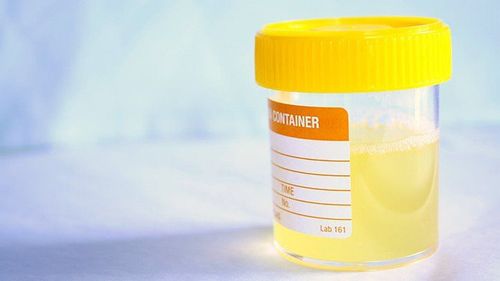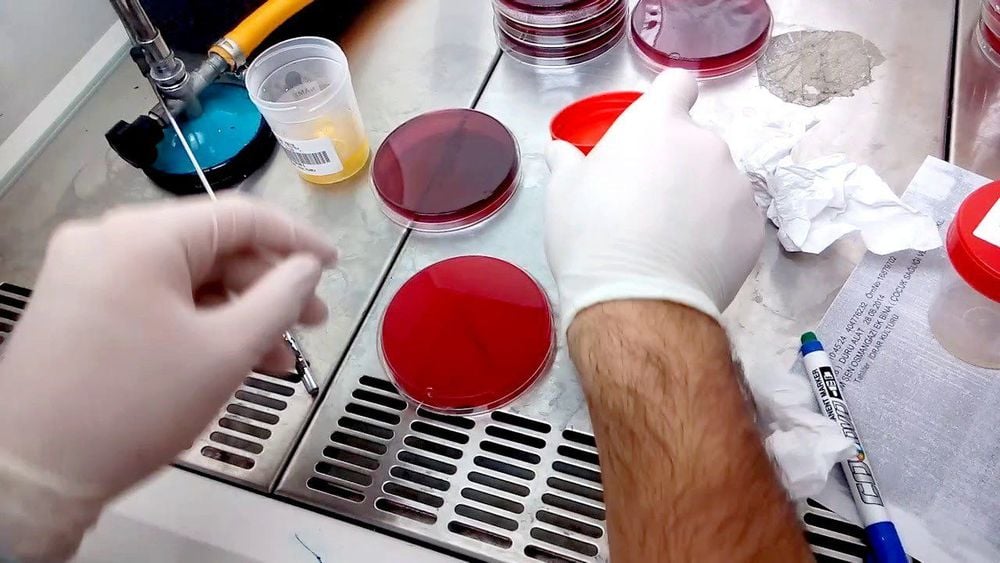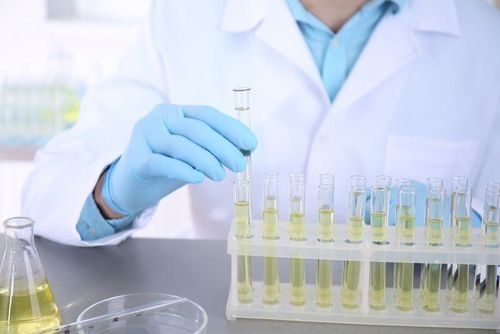This is an automatically translated article.
A urine culture is a laboratory test to check for the presence of bacteria in a urine sample. This is evidence to confirm the diagnosis of urinary tract infections in both adults and children. However, in order for the results to be highly accurate, the patient needs to be carefully instructed about the urine culture procedure in clinical microbiology testing.
1. What is a urine culture?
A urine culture is a test to look for germs in the urine that could be the cause of an infection.
In principle, urine in the bladder lumen is sterile. This means that the urine does not contain any bacteria or other organisms. However, bacteria can enter the urethra upstream and cause a urinary tract infection.
At this point, a urine sample is collected and a substance that promotes the growth of germs is added. If no bacteria develop, the culture is negative, meaning there is no UTI. On the contrary, if there is bacteria growth, the culture result is positive, the patient has a UTI.
Although the urine culture test does not reveal the site of infection, it also helps to identify the type of germ causing the disease as well as find the right antibiotic to treat the infection.
2. Objectives of urine culture test
Urinary tract infections are more common in women and girls than in men. This may be partly due to the fact that the female urethra is shorter and closer to the anus, allowing bacteria from the intestines to make easier contact with the urethra. Meanwhile, men have natural antibacterial substances in the prostate gland, which will reduce the risk of UTIs.

Nhiễm trùng tiểu là bệnh lý thường gặp ở chị em phụ nữ
Diagnosis of UTI Find the cause of the infection Select a sensitive antibiotic for pathogens Treatment evaluation
3. How is urine culture done?
In most cases, you do not need to do any special preparation before performing a urine culture. However, if you are taking or have recently taken antibiotics, you need to let your doctor know.
You will be asked to collect a midstream urine sample for testing. Usually, the first urine of the day is the most concentrated and best because the concentration of bacteria will be higher later in the day.
The correct midstream urine collection steps according to the urinalysis procedure should be strictly followed, to help protect the urine sample from bacteria resident on the penis or vagina that may interfere with the test results.
Wash your hands before starting to collect urine. Remove the cap of the urine container, place it down with the inner surface facing up. Do not touch the inside of the vial with your fingers. Clean the area around the external genitals: For men, pull back the foreskin and clean the tip of the penis thoroughly with clean gauze. For women, expose the folds of skin around the vagina with one hand, with the other hand clean the area around the vagina and urethra thoroughly with clean gauze from front to back to avoid spreading the virus. bacteria from the anus to the urethra.

Nước tiểu được đựng trong lọ chuyên dụng
Start urinating into the urinal: Females need to keep the folds of skin around the vagina while urinating. After the urine has flowed for a few seconds, place the collection vial into the stream. Collect approximately 60 mL of "midstream" urine without stopping the flow. Do not touch the edge of the vial to the external genitalia. Likewise, do not get toilet paper, pubic hair, stool, menstrual blood, or other foreign substances in the urine sample. Urinating continues all the way into the urinal. Carefully close the lid of the jar. Finally, wash your hands with soap under running water. You need to send the patient sample to the laboratory as soon as possible. If you collect your urine at home and can't get it to the lab within an hour, it's important to keep the urine sample cold, to prevent bacterial contamination from the outside environment.
For patients with urinary incontinence, healthcare professionals may need to collect a urine sample for culture by inserting a urinary catheter into the bladder. This method is also sometimes used to collect urine from patients who are critically ill and cannot obtain a specimen properly according to the urine culture protocol. At this point, using a catheter to collect a urine sample will reduce the chance of bacteria spreading from the skin or genital area in the urine sample.
Collecting a urine sample from a young child can be done using a special plastic bag with tape around it. The bag is attached to the child's external genitalia until the child urinates, usually within an hour. The bag will then be carefully removed and a urine sample collected.
In addition, in patients who cannot get urine from the bladder to the urethra by conventional methods, such as trauma, obstruction due to tumor compression, the doctor can insert the needle through the abdominal wall, directly into the bladder to collect urine. Specimens obtained by this method ensure the lowest risk of infection.

Thực hiện quy trình cấy nước tiểu tại phòng thí nghiệm
4. Factors that can affect urine culture test
When your doctor needs a urine culture test, you need to tell your doctor to reconsider this order because the results may be misleading or the results may not be helpful, if:
You are taking antibiotics or Just finished a course of antibiotics. You take a diuretic or just drank a large amount of water. This can dilute the urine and also reduce the number of bacteria in the specimen. You take a lot of vitamin C You have had a prolonged urinary catheter. This is a high-risk condition for a retrograde UTI. In these situations, if consideration of the indication is necessary, the physician may increase the sensitivity of the urine culture by using all of the first morning urine for 3 separate days.
Finally, the most important thing is that you should always follow the correct urine culture procedure. Any deviation at any step will result in sample contamination and false positive results.
In summary, urine culture is essential for the diagnosis of UTI in both adults and children. However, the results of the test greatly depend on the urine culture procedure, the more accurately performed, the more valuable the results will be.
For detailed advice, please come directly to Vinmec health system or register online HERE.













